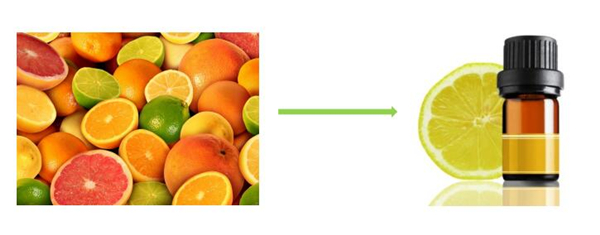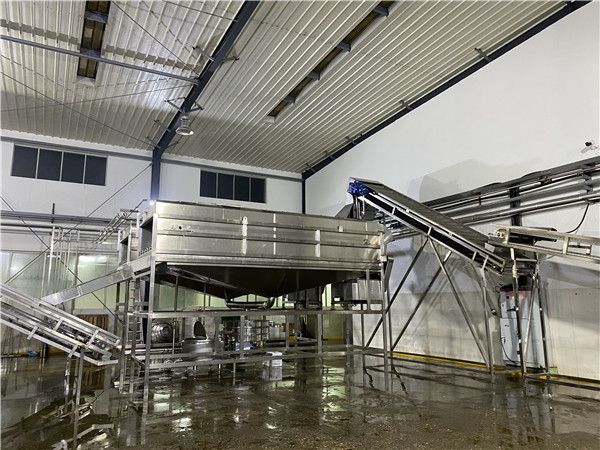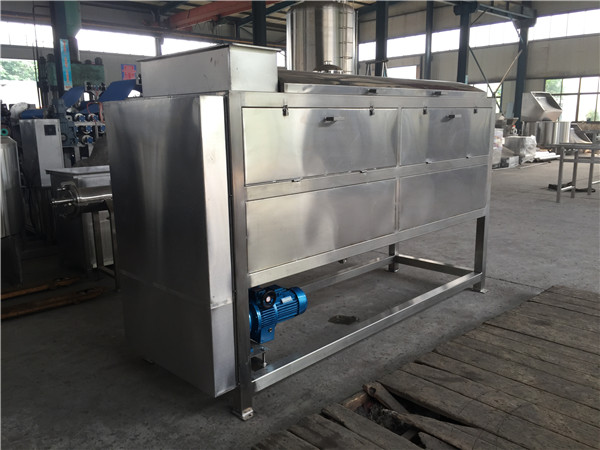The main methods for extracting citrus essential oil are cold grinding, cold pressing, and distillation. Except for the different oil extraction methods, the subsequent processes of cold grinding and cold pressing are basically the same; It applies to different citrus fruits like oranges, navel oranges, lemons and grapefruits.Citrus essential oil is a major category of natural fragrance essential oils. It is colorless and transparent, has an attractive orange fragrance, and has wide application value in the food and cosmetics industries.

Cold Grinding Method
1. Washing
Choose fresh citrus fruits and washing.
2. Grinding oil
After the citrus is transported to the feeding device, it falls evenly into the oil grinding area. In the oil grinding area, the stainless steel needle-punched oil grinding rollers rotate relatively in groups. The citrus beats and rotates on the oil grinding roller, and the citrus peels are rotated by the needle-punched oil grinding rollers. Under the action of the machine, the oil buds are punctured and the citrus oil flows out. The upper part of the oil grinding roller is equipped with a stainless steel scraper to push the citrus to the discharge port evenly at low speed. Then high-pressure water is used to wash away the citrus oil and collect it in the collection tank.
After essential oil extraction process, the citrus fruit can still be fed into the juice production line to extract the orange juice.
3. Separation
Using centrifuge machine to separate the citrus essential oil , water and impurities.
4. Standing
The crude essential oil also contains a small amount of water and possible peel wax, so it needs further standing treatment. The most commonly used simple method is to let the crude essential oil stand at a low temperature of 5 to 8°C for 5 to 6 days. Most of the residual water will settle out, and the peel wax in the essential oil will also crystallize and precipitate at low temperature. The fine citrus essential oil can be collected well.

Cold Pressing Method
1. Sorting and washing
Choose fresh, mildew-free citrus peels, remove sediment and debris first, and then washing. Since different types of citrus peels have different essential oils, they can be classified into tangerine peels, tangerine peels, orange peels, and pomelo peels.
2. Pressing oil
After the material is put into the screw press from the feeding port, under the push and squeeze of the screw propelling rod, the oil sac cells on the outer pericarp are squeezed and crushed, and the essential oil seeps out and flows out together with an appropriate amount of water spray.
5. Separation
Using centrifuge machine to separate the citrus essential oil , water and impurities.
6. Standing
The crude essential oil also contains a small amount of water and possible peel wax, so it needs further standing treatment. The most commonly used simple method is to let the crude essential oil stand at a low temperature of 5 to 8°C for 5 to 6 days. Most of the residual water will settle out, and the peel wax in the essential oil will also crystallize and precipitate at low temperature. The fine citrus essential oil can be collected well.

Hydro Distillation Method
1. Sorting and washing
The citrus peel used in the distillation method can be either fresh or dried. It must be free of mildew and rot, remove sediment and debris, and clean it.
2. Distillation
The citrus peels are heated in water, and the water-to-citrus peel ratio is about 2:1. The citrus essential oil is brought out of the distillation kettle with the steam generated by the boiling water.
Stainless Steel Mixing Equipment Application
Plate Centrifuges Application
Esterification Reaction In Fragrance Synthesis
Contact: Project Manager
Phone: +86-18120438367
Tel: +86-18120438367
Email: info@tycoretech.com
Add: No. 1, Optics Valley Avenue, East Lake New Technology Development Zone, Wuhan, Hubei, China
We chat
